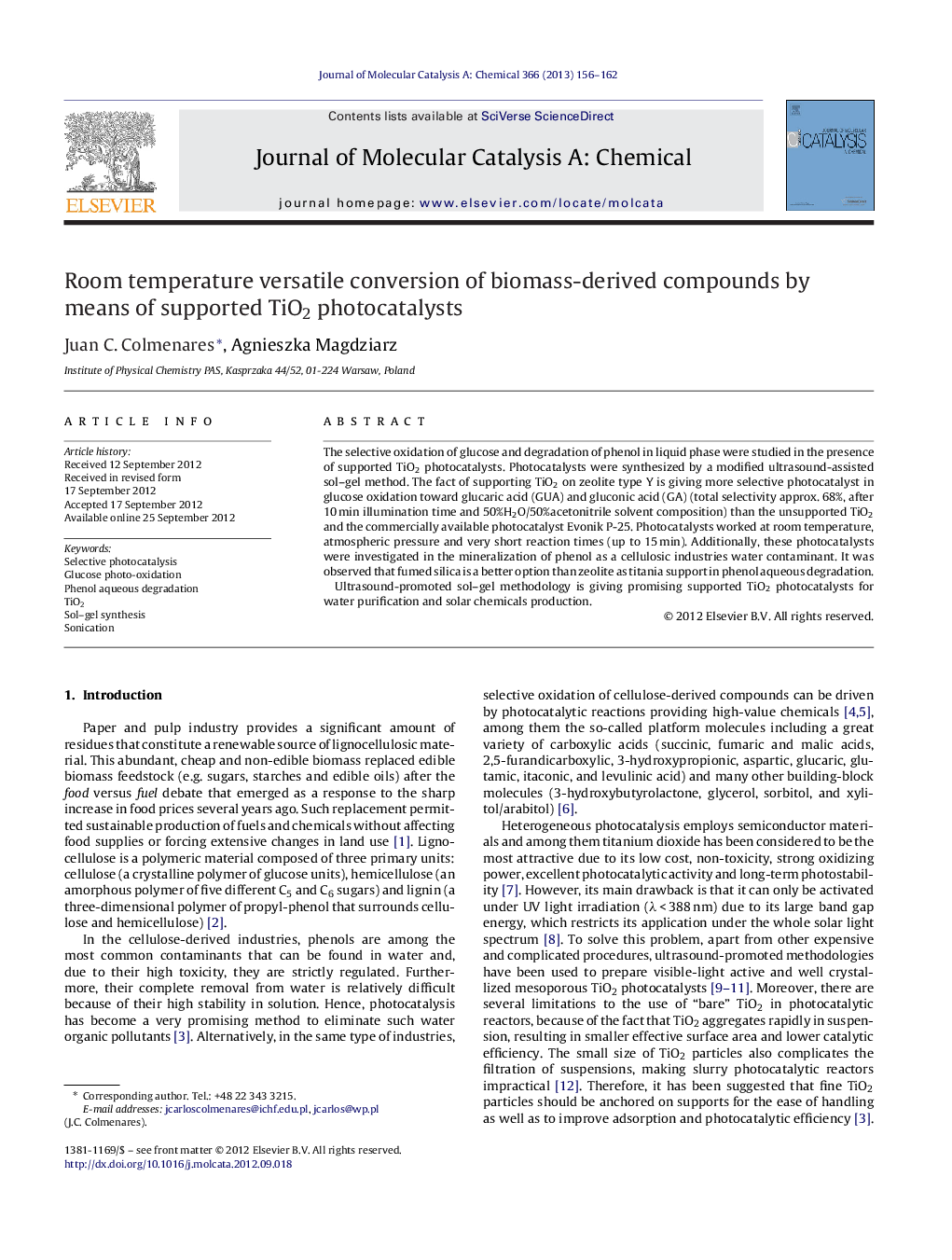| Article ID | Journal | Published Year | Pages | File Type |
|---|---|---|---|---|
| 65950 | Journal of Molecular Catalysis A: Chemical | 2013 | 7 Pages |
The selective oxidation of glucose and degradation of phenol in liquid phase were studied in the presence of supported TiO2 photocatalysts. Photocatalysts were synthesized by a modified ultrasound-assisted sol–gel method. The fact of supporting TiO2 on zeolite type Y is giving more selective photocatalyst in glucose oxidation toward glucaric acid (GUA) and gluconic acid (GA) (total selectivity approx. 68%, after 10 min illumination time and 50%H2O/50%acetonitrile solvent composition) than the unsupported TiO2 and the commercially available photocatalyst Evonik P-25. Photocatalysts worked at room temperature, atmospheric pressure and very short reaction times (up to 15 min). Additionally, these photocatalysts were investigated in the mineralization of phenol as a cellulosic industries water contaminant. It was observed that fumed silica is a better option than zeolite as titania support in phenol aqueous degradation.Ultrasound-promoted sol–gel methodology is giving promising supported TiO2 photocatalysts for water purification and solar chemicals production.
Graphical abstractFigure optionsDownload full-size imageDownload high-quality image (190 K)Download as PowerPoint slideHighlights► Novel supported titania photocatalysts by a modified ultrasound-assisted sol–gel technique. ► Glucose photocatalytic selective oxidation to glucaric acid and gluconic acid. ► Prepared photocatalysts with high potential for water (phenol removal) purification and solar chemicals production. ► Simplification of conventional multistep synthesis of valuable compounds to a one-pot photocatalytic pathway.
